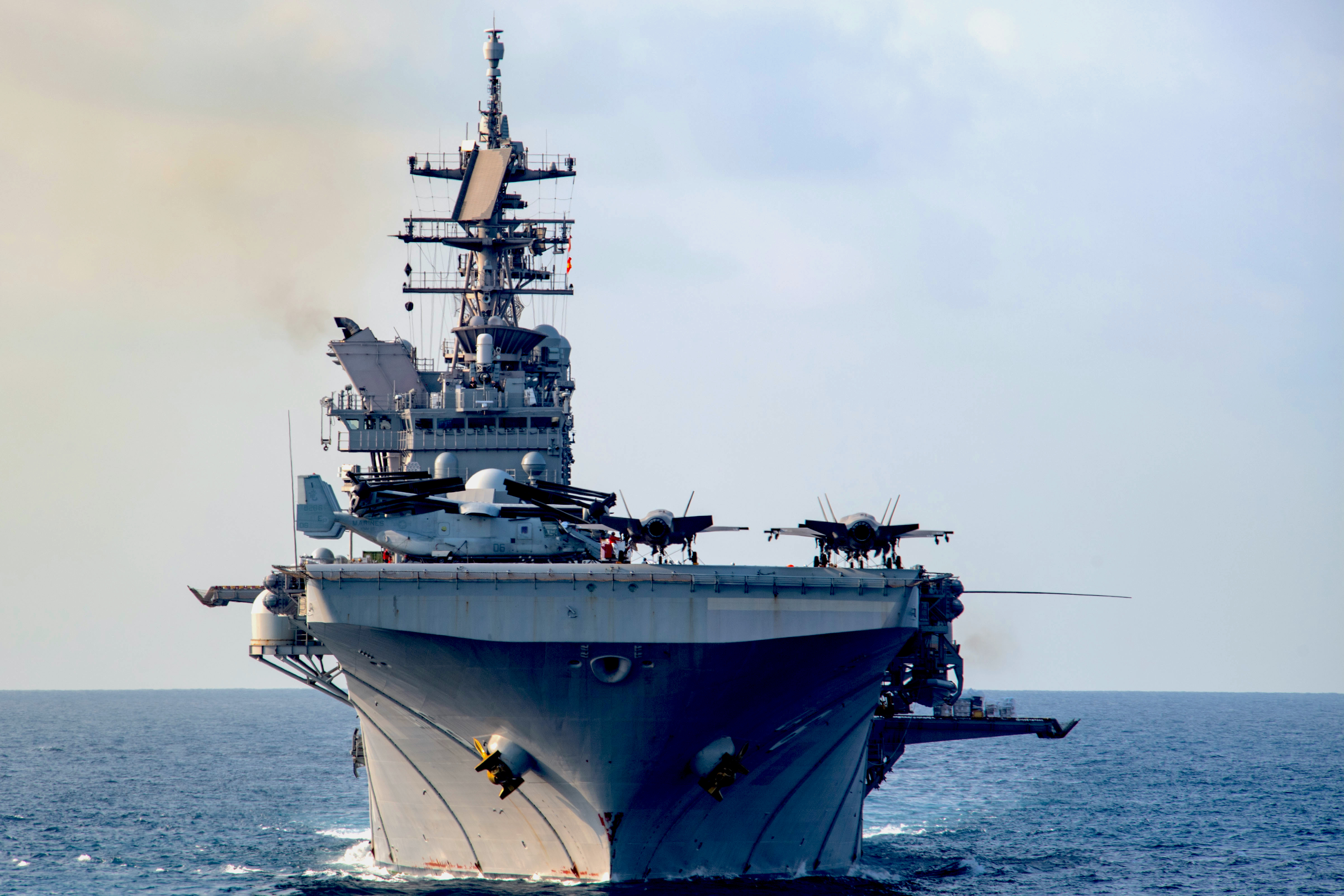
The Navy has reached a preliminary agreement with Huntington Ingalls Industries on a plan to buy four amphibious warships, but the Pentagon may hold off on executing the deal pending a new force structure assessment, said a service official testifying before Congress today.
During a hearing in front of the Senate Armed Services Committee’s seapower subcommittee, acting Navy acquisition chief Jay Stefany told lawmakers that the Navy reached a “handshake agreement” with HII’s Ingalls Shipbuilding that would adhere to Congressional authorities the service received in the Fiscal Year 2021 policy bill.
“We have finished negotiating with HII Ingalls to document a contract structure that can be put in place to implement the four-ship procurement that you’re referring to,” Stefany told the panel.
Lawmakers in the FY 2021 National Defense Authorization Act included a stipulation allowing the Navy to pursue a multi-ship buy for one America-class amphibious assault ship and three San Antonio-class amphibious transport docks.
“We just finished that up about a week ago. And so we have a handshake agreement on what that would look like if we were to actually enact it into a contract. And we package that up and we’re sending it to the department leadership for a decision … and get that in place before the authority that expires at the end of this year that you provided us,” Stefany said.
Stefany said early signals from the Pentagon suggest it wants to hold off on the buy so the Defense Department can conduct a review for the FY 2023 budget cycle, and also coordinate with deputy chief of naval operations for warfighting requirements and capabilities Vice Adm. Jim Kilby (OPNAV N9) and Deputy Commandant for Combat Development and Integration Lt. Gen. Eric Smith, about the correct combination of ships the future fleet will need.
“The commitment of four ships at once they would like to defer that commitment until they are able to make that force structure assessment,” he added. “So right now, indicators are that we’re not going to be able to execute that. But it’s not a done deal. It’s going through the process within the department for a final decision.”
The Biden administration did not include a five-year outlook with the recent Fiscal Year 2022 budget submission and has yet to unveil its 30-year shipbuilding plan. Stefany said the Navy’s 30-year blueprint, which projects both the type and quantity of ships the service will buy, is nearly finished and could deliver to lawmakers “any day now.”
“It was absolutely our goal to have it to you within a few days of the budget. It is in the final, final, final chop cycle within the department,” Stefany said.
Senator Roger Wicker (R-Miss.), from the state home to Ingalls Shipbuilding and previously chaired the upper chamber’s seapower panel, described the recent budget submission as “dangerously inadequate.” He noted the Navy did not ask to buy any amphibious ships in the request.
“Last year’s Congress authorized a multi-ship procurement bundle for three LPDs and one LHA. Yet today, contracts for LPDs 32 and 33 have not been awarded,” Wicker said.

Lawmakers, including Wicker, also criticized the service for only asking for one guided-missile destroyer instead of the two previously projected.
The service is party to a multi-year procurement agreement with Bath Iron Works and Huntington Ingalls Industries for the Arleigh Burke-class Flight III destroyers. A Navy official confirmed to reporters last month that the service will have to pay a $33 million penalty if it only buys one destroyer because it would breach the multi-year deal.
Sen. Mazie Hirono (D-Hawaii), who chairs the Senate’s seapower panel, urged the Navy to find a way to meet its obligations under the multi-year deal.
“Basically we all know what the advantages of a multi-year contract is. And we know that we are now going to have to pay a penalty, which of course is far less than the $1.7 billion that we would have to find to replace – or to put this ship back in the budget,” Hirono said.
“But I do think that whatever you’ll have to do to comply with the multi-year contract needs to happen because Mr. Secretary, you do acknowledge that when we violate the terms of a multi-year contract, it will make the job harder for those of us who actually support these kinds of contracts.”
Stefany agreed and described cutting the second destroyer and breaching the procurement agreement as “the last choice, the hardest choice” the service faced in the budget cycle, but that it was forced to do so because of the topline number.
Funding the second destroyer is the Navy’s top unfunded priority, USNI News previously reported.





